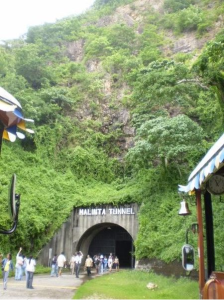For centuries, Corregidor Island has stood watch over Manila bay and the capital of the Philippines. During the Spanish colonization the island was used as a lookout point and fortress to protect the city of Manila from pirates and invaders. It also served as a correction facility or penal colony notorious for its hard labor and its virtually inescapable nature. It is said that Corregidor Island got its name from the Spanish word corregir, which means ‘to correct’.
After the American government took over the Philippines, the US Military recognized the Corregidor’s strategic value and further transformed it into a military base, complete with barracks, offices, gun emplacements, docks, and an underground tunnel to serve as a bunker in case of war.
The base was named Fort Mills in honor of Brigadier General Samuel Meyers Mills, Jr., Chief of Artillery of the U.S. Army from 1905 to 1906.
Little did the builders at the time know just how crucial Corregidor would be in the coming years. When the Japanese Imperial Army invaded the Philippines in 1941, General Douglas McArthur transferred most of the Filipino and American forces from the cities to Corregidor Island to serve as a point of resistance against the Japanese invasion. Along with the military, the Philippine Commonwealth government under President Manuel Quezon was also evacuated to Corregidor.
On May 6 1942, the island fortress of Corregidor fell to the Japanese army and signaled the surrender of the Philippines to Japan. Regardless of the origin of its name, the island will always be remembered as one of the last bastions of Philippine and American resistance to Japanese invasion.
Today, Corregidor Island is a premier tourist destination, and if you’re travelling to the Philippines and staying for a while in Manila, then a trip to Corregidor is something that should be on your to-do list.
How to get there
To get to the island, you can take a fast water craft from the Sun Cruises port located at the CCP Complex along Roxas Boulevard. Most taxi drivers in Manila know this area so just jump into a cab and tell them you want to go to CCP and the boat going to Corregidor. The ship for the day trip to the island leaves at 8am. If you’re wondering why it starts so early, it’s because there are just too many things to see and do in Corregidor.
What to do when in Corregidor
The day trip to Corregidor island includes a guided tour and one of the first things you’ll encounter on your journey are the ruined and bombed out buildings which were never really repaired or torn down. The foremost of these which you will see are the ruins of the barracks and NCO quarters. After these, you can visit the remains of the massive gun batteries which protected Manila Bay, all unusable, but still an amazing sight.
After the trip to the ruins you can go and visit the Pacific War Memorial dedicated to the Filipinos and American soldiers who perished in the defense of the fortress.
Similarly, there is also a separate memorial for the Japanese service men who perished when the island was retaken at the end of the war. Tours for Japanese visitors are separate from those of American visitors as, understandably; these stir emotions within veterans of the war.
The Pacific War Memorial also features an altar which, on the noon of May 6 of every year, visitors are required to observe a minute of silence to commemorate the fall of Corregidor.
Malinta Tunnel

A tour of Corregidor is not complete without a visit to the famous Malinta Tunnel, a bunker built by the Americans as a bomb shelter and base of operations on the island.
Malinta Tunnel was the headquarters for American and Filipinos forces and housed the command center of General Mac Arthur and the office of the President of the Philippine Commonwealth. The tunnel was transformed into a venue for a walking tour with audio-visual presentation of the history of the battle for the island. The presentation featured recorded messages, radio communications and other sound bits from the war.
Other activities while in Corregidor
If you think that’s all Corregidor has to offer then you’ve just seen the tip of the iceberg. The island also features a number of hotels, and restaurants, theme parks and beaches.
There are also dive spots for those who wish to see the ruining which lie beneath the surface of the island’s clear waters. So staying overnight on the island is a good idea if you’ve got the time to spare as there are just so many things to do and see on the former battlefield.
So remember when planning your Philippine islands travel, take a trip to Corregidor. A whole day tour of this 702 hectare island is just full of sights and activities guaranteed to intrigue and amaze you so bring your camera and be ready to take lots of pictures to bring home.